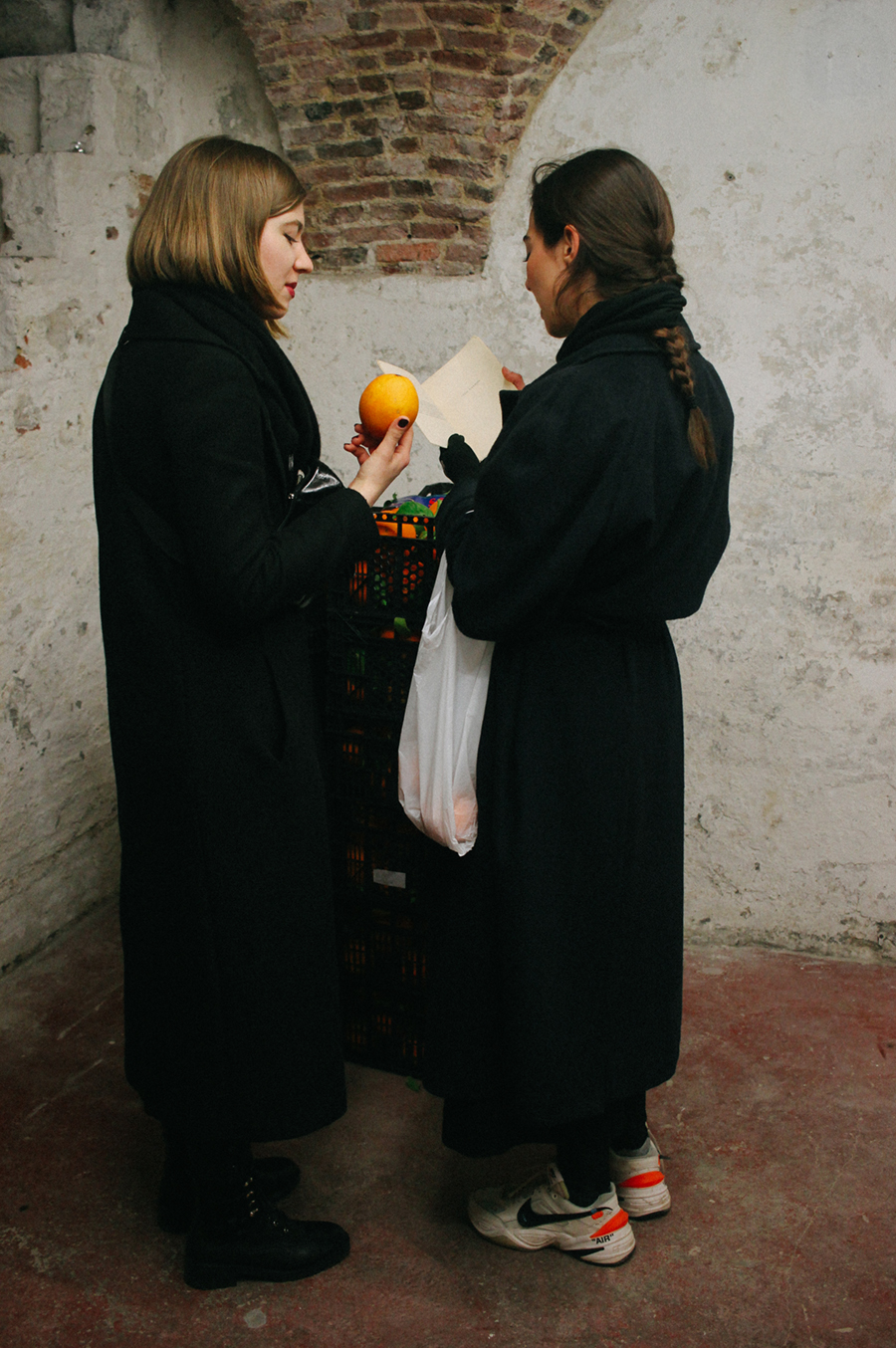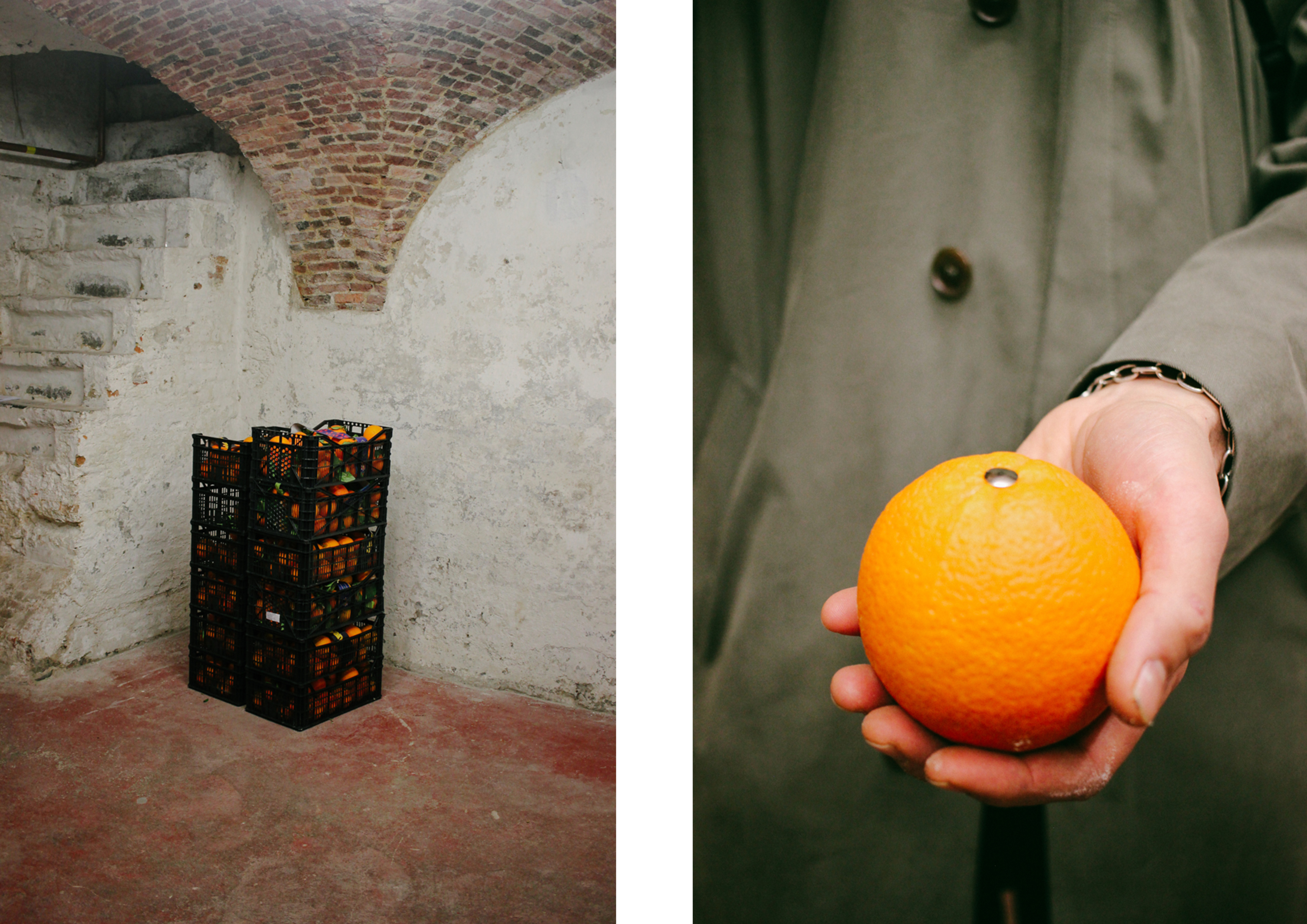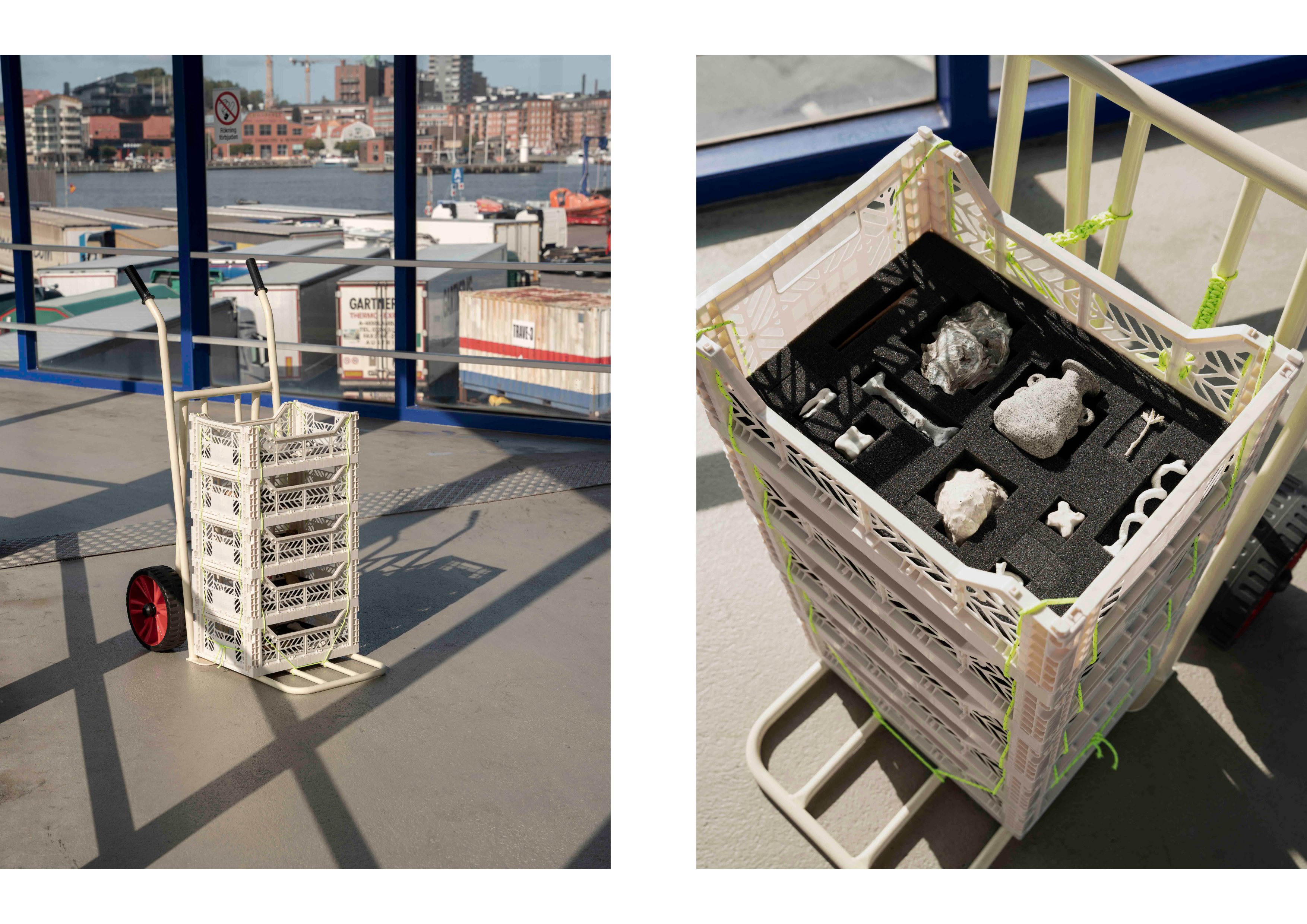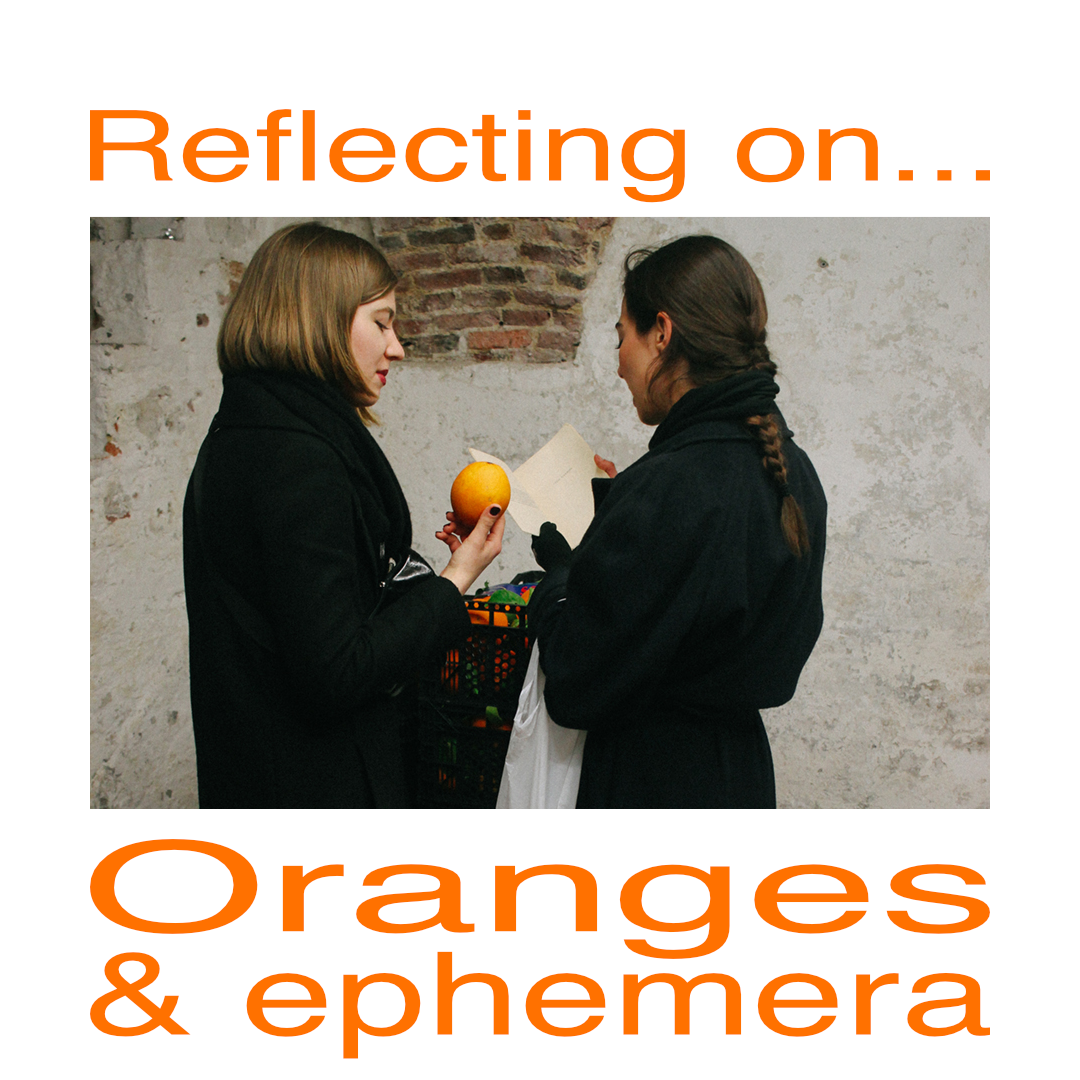


12 crates, 2019. Céline Mathieu. CLAPTRAP, Antwerp
This morning I awoke to an Instagram message from my friend artist and writer Céline Mathieu. Céline had sent me a pst presenting two of the outcomes of her ongoing residency at AIR Berlin Alexanderplatz with performance partner Myrthe van Der Mark. Together they form CMMC, who I first encountered at Propositions Independent Art Fair, Brussels in 2015. I’ve followed them ever since admiring their playful, poetic and philosophical approach to performance making and art in general. Back to the point, the post. The two works described in the post, “‘Flying and Perfume’: Every active water sprinkler in the city between 15th and 19th September 2021 is declared a performance” and “‘Marie and Cavok’: An oak and a pine tree grown entwined in the grounds of the Dahlem Museum are declared a performance and henceforth part of the museum’s permanent collection.” Joyful, critically engaged, relevant to so many discussions and costing nothing other than intellectual labour and the necessary calorie count to keep the motor running on the duo's brains.
Céline and I have been talking a lot recently about her drive to create artworks that explore the potentials of circular production economically and ecologically. This circularity happens through using materials that are returned into a system after the exhibition, are somehow consumed in the showing of the artwork or producing completely ephemeral artworks. Céline's exploration of the “further life of materials” engages with the materials before and after the exhibition, working with various suppliers and manufacturers as collaborators with that negotiation and relationship forming as large a part of the artwork as the exhibition manifestation. A simple illustration of this process would be her 2019 work 12 crates presented at CLAPTRAP, Antwerp.
“In a cellar, a fruit merchant is asked to deliver 12 crates of oranges. Whichever way they are put down by the merchant, is how they are installed for the show. Visitors enter, receive an orange after seeing it pierced by a little metal pin, and are read a Polish poem from a ‘Don Quichot book. The artist does not speak the language but reads what it says. At the end of the exhibition, the fruit merchant is convinced to buy back the remaining oranges to sell them again in his shop.”
Works like this are a joy. It is serious and poetic and beautiful and engaging but also completely ridiculous. For this text and serving as an example of these circular ecologies and economies, it is a beautiful complex dance between communication, systems of capital, power dynamics and importantly represents a zero-sum game in terms of storage, excess costs, waste. The pierced oranges are consumed by the audience. The others return to the system from which they were acquired. The discarded peels composted.

12 crates, 2019. Céline Mathieu. CLAPTRAP, Antwerp
Conversations with Céline on this subject have got me thinking about other instances of this kind of approach and also how it can be reflected in a dynamic programming directive for artist-run. Elements of Tino Segal's practice where he provides only a set of instructions for performances by gallery staff as the artwork, and Francis Alÿs’ Paradox of Praxis 1 in which the artist pushed a block of ice through the streets of Mexico City as it melts to nothing come to mind. It also made me think of local Göteborg artist-run project Gallery Pirra.
Pirra is a kind of slang term for a sack trolly - whether it is ubiquitously Swedish or just a Göteborg thing I don't know. Galleri Pirra uses one of these as the entire exhibition format and structure and constraint for their projects. The group consists of Kristin Sandström, Sarah Meurle and Hedvig Schroeder and makes use of this portable exhibition platform to initiate fleeting mobile exhibitions, including their current offering as part of GIBCA Extended by textile artist Terese Molin. The exhibition existed for two days on Göteborg’s Älvsborgsbrön the city largest bridge, a teal cousin of the Golden Gate Bridge. Whilst not fully in the same groove as Céline the project has got me thinking about the possibilities and opportunities presented by this kind of artwork and its parallels in the sense of exhibition-making/public programming.

Pendant, scraper, votive offering, 2020. Danielle Goulé. Galleri Pirra, Göteborg
One of the biggest challenges faced by artist-run initiatives, as I seem to constantly say in these texts, is money. Money can’t buy you love, but it can buy you storage space, transportation, a huge exhibition space and a whole bunch of other stuff that makes the production of exhibitions quite a lot easier. Even when you do have a space to call your own as an artist-run gallery you may well also be using it as a studio or event space. The storage of works for any kind of duration before or after the exhibition is rarely possible. Transporting heavy sculptures or works of any delicacy can be highly expensive, another prohibition on looking outside of the immediate location. These factors can easily combine to lead to programming which only presents local artists (or worse - just the work of those involved in the project) out of perceived necessity. More ephemeral practices and a shift in the perception of how art is defined offer a whole bunch more options to a small poorly funded initiatives, however. It cuts out many costs or at least mitigates them, and sprinkling a range of these kinds of elements into a programme which also forwards locally based artists working in bulkier and more permanent ways develops the whole cultural ecology. It encourages new ways of thinking about exhibition design and production, raises different issues and challenges, makes for better-rounded and better-informed staff and public. I think it also opens the door to a more ephemerally focused view of public artworks. This can surely only be a plus in contrast to more expensive, pointless and bland sculptural installations being the only form of public art (and I hesitate to call it that since it increasingly feels like the urban planning equivalent of accessorising) commissioned.
As the works which opened this text demonstrate, this approach to art-making can open up new avenues in the development of museum collections, how we consume and collect art and the importance of art generating conversation and discussion. For me, it speaks to the taxonomical habit of museums and the assertions made in deciding what is and isn't one thing or another. I’m not super interested here in the discussion generated by the latest large scale mural the municipality has deemed acceptable graffiti whilst persecuting all else because it looks good on social media. I’m not super interested in metrics and analytics in that sense. Instead, I think there is much more to be gained from sparking actual direct conversations with members of the public who wouldn’t encounter conceptual art usually. As we here at EC have mentioned before, adding to the existing chorus, exhibition spaces and museums can be threatening places for many. They are generally highly exclusive despite the supposed efforts to shift this. An exhibition based around a pirra in a super public space or declaring a pair of entwined trees not only an artwork but part of a museum’s permanent collection you can provoke a whole set of different more personal and engaged conversations around art and artists and galleries and cities and people and life in an entirely new context. Additionally, when considering this through a work like 12 crates the production of the work directly collaborates with someone from outside of the art world, it beings a new set of conversations, perhaps a new audience. It encourages a better understanding of and relationship with local businesses which can support both a greater sense of community and open some exciting new doors - I’ll be writing something on this in more detail soon.
So my reflection, I suppose, is something along the lines of - think outside the box, talk to your neighbours and think bigger. All very utopic right!? But day time TV motivational coach vibe aside I think you probably get my meaning. We don’t have to just keep doing things the same way they have always been done because that is the way they have always been done.
ESSAY
Joe Rowley - SEP 2021

The Reflecting on... series takes situations, objects, artworks, articles, texts, podcasts and anything else really as starting points for reflection on artist-led and self-organised (AL&SO) practice.
Céline Mathieu
Galleri Pirra
Ephemeral Care focuses on ethics, practice and strategies in artist-led and self-organised projects.